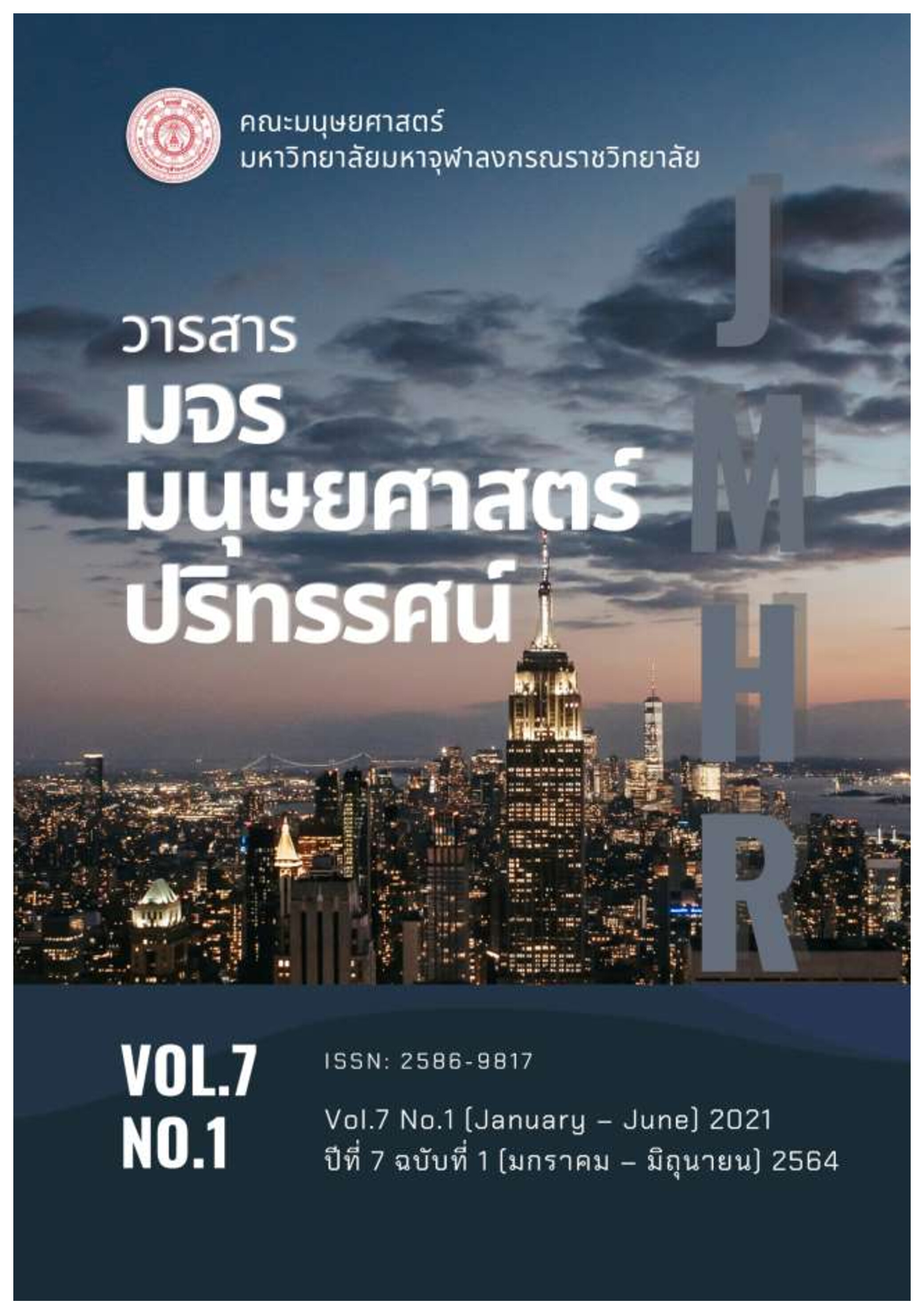โปรแกรมพุทธจิตวิทยาการสร้างเสริมความสุขการคิดบวกบุคลากรสายอาชีพช่าง
คำสำคัญ:
ความสุขในการทำงาน, พุทธจิตวิทยา, บุคลากรช่าง, ช่างสายพุทธบทคัดย่อ
การวิจัยครั้งนี้เป็นการวิจัยกึ่งทดลองแบบสองกลุ่มวัดผลก่อนและหลังการทดลอง มีวัตถุประสงค์เพื่อศึกษาผลของโปรแกรมพุทธจิตวิทยาการเสริมสร้างความสุขการคิดบวกบุคลากรสายอาชีพช่าง กลุ่มตัวอย่าง ได้แก่ บุคลากรช่างปรับอากาศ จำนวน 44 คน แบ่งเป็นกลุ่มทดลอง 22 คน และกลุ่มควบคุม 22 คน เครื่องมือที่ใช้ในการทดลอง คือ โปรแกรมการพุทธจิตวิทยาการเสริมสร้างความสุขการคิดบวกบุคลากรสายช่าง ประกอบด้วย 5 ขั้นตอน 12 กิจกรรม เครื่องมือที่ใช้ในการเก็บรวบรวมข้อมูล ประกอบด้วย แบบวัดความสุขบุคลากรช่าง ด้านความสุข ด้านคิดบวก ด้านอิทธิบาท 4 ซึ่งมีค่าความเชื่อมั่น 0.890 วิเคราะห์ข้อมูล สถิติเชิงพรรณนา เปรียบเทียบภายในกลุ่ม โดยใช้สถิติ Paired t- test และเปรียบเทียบระหว่างกลุ่ม โดยใช้สถิติ Independent t- test ข้อมูลเชิงคุณภาพใช้ เทคนิค 6’C
ผลการวิจัยพบว่า หลังการทดลอง กลุ่มทดลองมีคะแนนเฉลี่ย ความสุขบุคลากรช่าง ด้านความสุข ด้านคิดบวก ด้านอิทธิบาท 4 มากกว่ากลุ่มควบคุม อย่างมีนัยสำคัญทางสถิติ (p-value<. 05) สรุปได้ว่า สามารถนำโปรแกรมพุทธจิตวิทยาการเสริมสร้างความสุขการคิดบวกไปใช้ในการพัฒนาบุคลากรช่างให้มีความสุขในการทำงาน และพัฒนาให้เกิดคุณลักษณะช่างสายพุทธต่อไป
เอกสารอ้างอิง
ฉัฐวีณ์ สิทธิ์ศิรอรรถ และคณะ. (2018). ศึกษาผลการใช้กิจกรรมส่งเสริมความคิดเชิงบวกในนักศึกษาประกาศนียบัตร วิชาชีพครู. Journal of Humanities and Social Sciences Thonburi University, 27, 158.
ชุติมา พงศ์วรินทร์. (2554). ความสุขของนิสิตนักศึกษาในบริบทพุทธธรรม: การศึกษาข้อมูลเชิงประจักษ์และการพัฒนามาตรวัด (วิทยานิพนธ์ศิลปศาสตรดุษฎีบัณฑิต). จุฬาลงกรณ์มหาวิทยาลัย. กรุงเทพมหานคร.
ประเวศ วะสี. (2551). นิตยสารหมอชาวบ้าน. สืบค้น 20 เมษายน 2564, จาก https://www.foctor.or.th
พระครูภาวนาสังวรกิจ. (2562). การพัฒนาสุขภาวะองค์รวมสำหรับผู้สูงวัยตามแนวพุทธจิตวิทยา (วิทยานิพนธ์พุทธศาสตรดุษฎีบัณฑิต). มหาวิทยาลัยมหาจุฬาลงกรณราชวิทยาลัย. พระนครศรีอยุธยา.
พระทวีป กลฺยาณธมฺโม. (2553). การศึกษาวิเคราะห์หลักกัลป์ยาณธรรมสำหรับการดำรงชีวิตที่ปรากฏในคัมภีร์พระพุทธศาสนา (วิทยานิพนธ์พุทธศาสตรมหาบัณฑิต). มหาวิทยาลัยมหาจุฬาลงกรณราชวิทยาลัย. พระนครศรีอยุธยา.
สำนักงานคณะกรรมการพัฒนาการเศรษฐกิจและสังคมแห่งชาติ. (2554). แผนพัฒนาเศรษฐกิจและสังคมแห่งชาติ. ฉบับที่ 11 (พ.ศ. 2555-2559), ลงวันที่ 26 ตุลาคม พ.ศ. 2554.
สำนักงานคณะกรรมการพัฒนาการเศรษฐกิจและสังคมแห่งชาติ. (2559). แผนพัฒนาเศรษฐกิจและสังคมแห่งชาติ. ฉบับที่ 12 (พ.ศ. 2560-2564). ลงวันที่ 29 ธันวาคม พ.ศ. 2559.
AON Hewitt. (2015). Aon Hewitt’s Model of Employee Engagement. Retrieved August 7, 2017, from https://www.aonhewitt.co.nz/getattachment/77046028-9992-4d77-
Beck, J. S. (2011). Cognitive behavior therapy: Basics and beyond (2nd ed.). New York : The Guilford Press.
Manion, Jo. (2003, December). Joy At Work! Creating a Positive Workplace. Journal of Nursing Administration, 33(12), 652-659.
Seligman, M. E. P. (2011). Flourish: A visionary new understanding of happiness and well-being. New York, NY: Atria Books.






